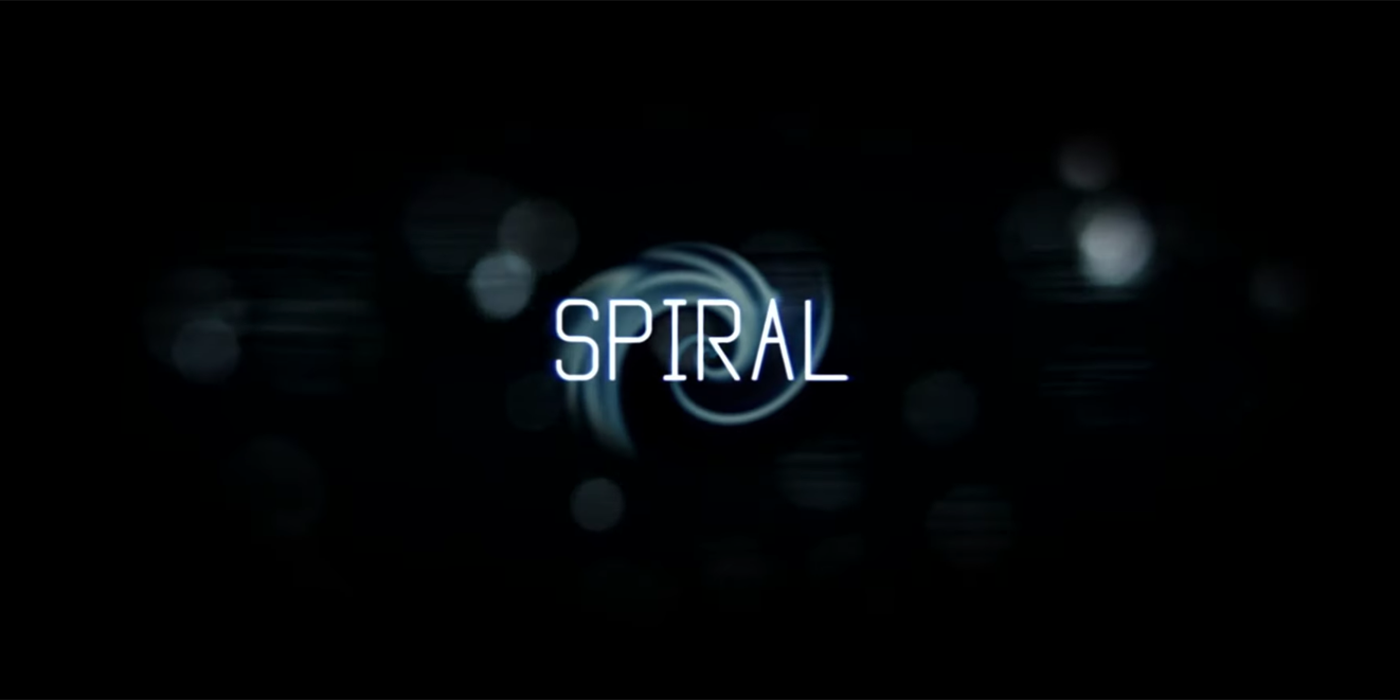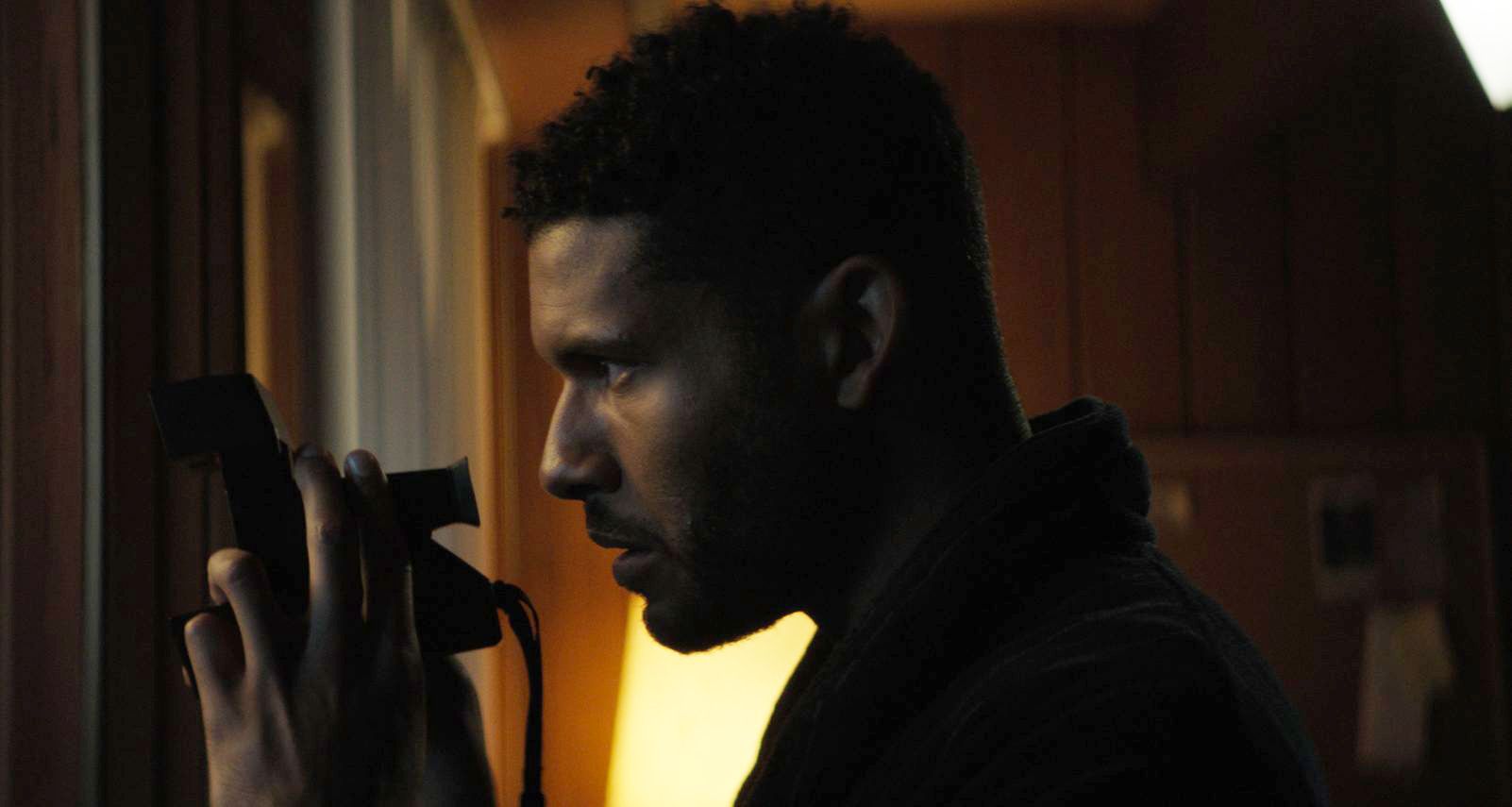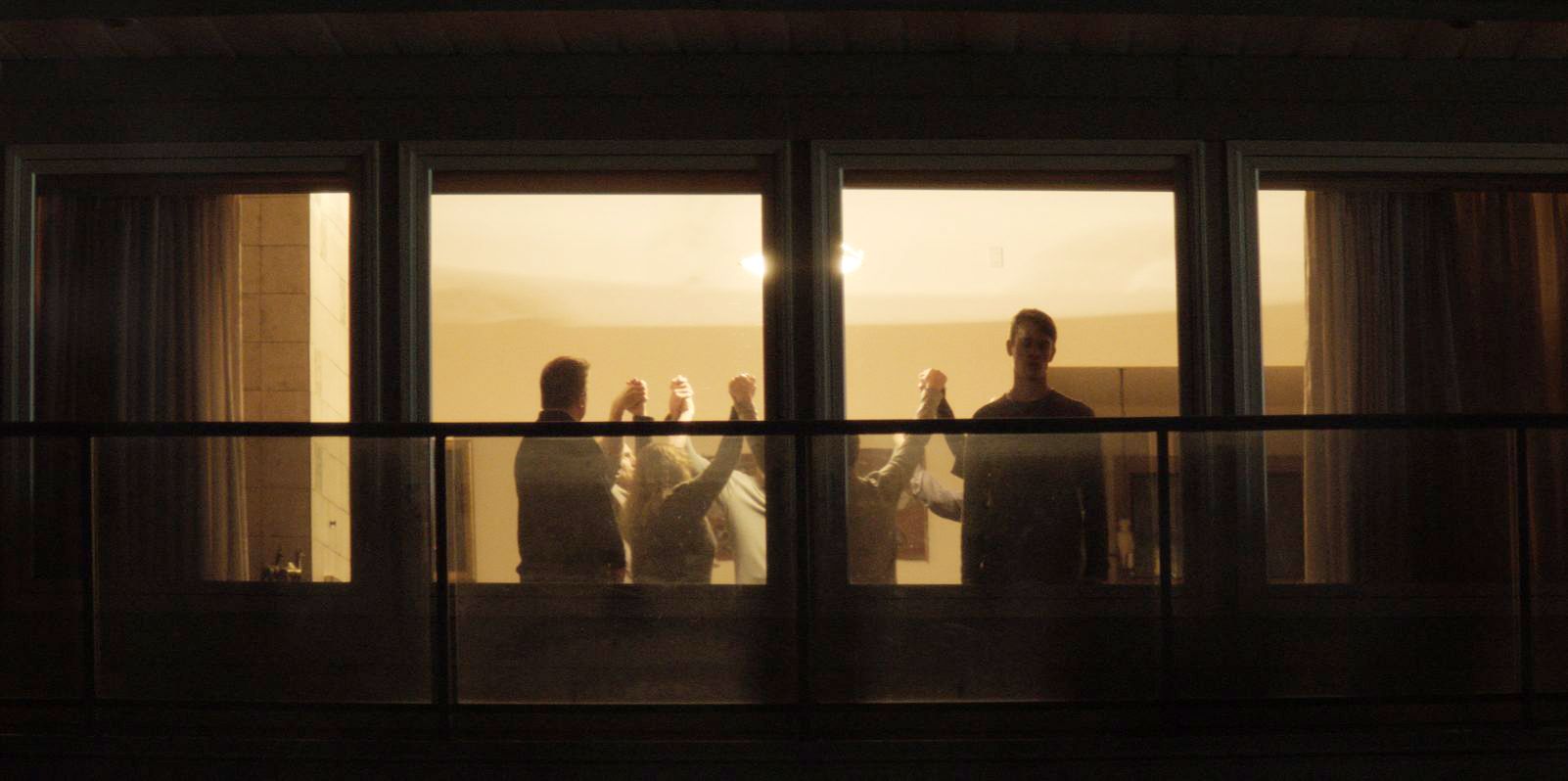WARNING: The following article contains spoilers for Spiral, now streaming on Shudder.
People in the LGBTQ community frequently identify with horror films, though the movies themselves usually lack real queer representation. Streaming service Shudder has attempted to rectify this oversight, by bringing queer horror to the mainstream community. Its latest queer horror film, Spiral, draws inspiration from films like Rosemary's Baby, The Wicker Man and, most obviously, Get Out.
Undeniably, Spiral is a good film. The problem is, however, that it does not live up to the potential of its incredible concept. While the film is enjoyable, well-acted, entertaining and genuinely suspenseful, the story's shift halfway from societal bigotry to surreality marks a loss of focus that ultimately waters down the movie's message.
Spiral follows Aaron and Malik, a queer couple who are moving with their 16 year-old daughter from the city to the suburbs. The pair quickly get acquainted with their new town, but while Aaron befriends the seemingly approachable neighbors, Malik picks up on an undercurrent of homophobia throughout every interaction, made worse by a series of disturbances around their house.
This leads Malik down a path of paranoia and possible delusion as he seemingly uncovers a repeating pattern of cruelty and horror that befalls those who come to this town. He may be losing his mind or acting based on past trauma -- or there may be something rotten at the core of the town.
The entire cast of Spiral is great, but the standout is Jeffrey Bowyer-Chapman as Malik. As an out, gay, Black man, Malik attempts to respond to uncomfortable situations with sass and attitude. However, as the story progresses, the layers of his facade peel away to reveal how delicate he can be -- especially when he has a trauma response. Spiral is ultimately a character study, as circumstances continue to push Malik further into his own psyche.
Spiral exploits queer people's frequent anxiety about being surrounded by secretly homophobic bigots. This is most vividly relayed in the first half of the movie, where many conversations seem cordial on the surface, but by reading between the lines, undercurrents of contempt and manipulation become clear. This draws comparisons to Get Out, especially because of the intersection of queerness and race, but this comparison does Spiral no favors.
The social horror of pasteurized bigotry remains present in Get Out from start to finish. Unfortunately, the same cannot be said for Spiral. The film's second half pulls away from its commentary on homophobia to delve into reality-bending horror.
While both aspects are done well enough, they come at the expense of the other half. Halfway through Spiral, Malik starts to hallucinate. The audience is told events happen even though they don't see them occur, leading viewers to question if these events are even real. In one sense, this is excellent because it feels like the film is almost gaslighting viwers into questioning if anything is wrong. However, these concerns stop tying into the oppression queer people face.
It's later revealed the villains switched Malik's medication with hallucinogenic drugs, which results in him doing things under the influence he has no memory of doing, such as having a sexual affair and staying in a hotel for days on end, while also hallucinating demons and ghosts. All of this is designed to convince Malik to shoot the villain and end up being framed for murder-suicide as part of a cult ritual that grants the people who live in the town immortality. The events in the second half of Spiral would play out the same whether or not Malik was gay or not.
In this case, the fact that Malik and Aaron are gay is mostly irrelevant. The town preys on minorities not because they feel any ill-will toward them, but rather just know people are more inclined to believe the story they present without investigating further. In fact, in the epilogue, we see an Islamic hetereosexual family moving in, about to encounter the same fate.
Halfway through, Spiral stops being a commentary specifically on homophobic violence and instead becomes a watered-down story about how bigotry is universal. It further suggests that racism, homophobia and other violence against marginalized people is all the same, which is untrue.
Spiral is scary in the same way Get Out or The Wicker Man are scary. While there are occasional jump scares and at least one genuinely gruesome visual, most of the film exploits the audiences' fear of a society where everyone is out to get them. The atmosphere is oppressive. Ultimately, however, the film is scariest when it draws from the real-life homophobic violence many queer people are subjected to on a regular basis.
The film is weakest is when it goes to more standard horror imagery, which feels safer than seeing a bunch homophobic teens beating a gay couple in the street. Malik walking home and seeing a slur written on his wall, knowing someone was in the house and might still be there watching him, is terrifying because it feels real.
Despite its flaws, Spiral is worth watching and will likely achieve cult status, especially among queer horror fans.



